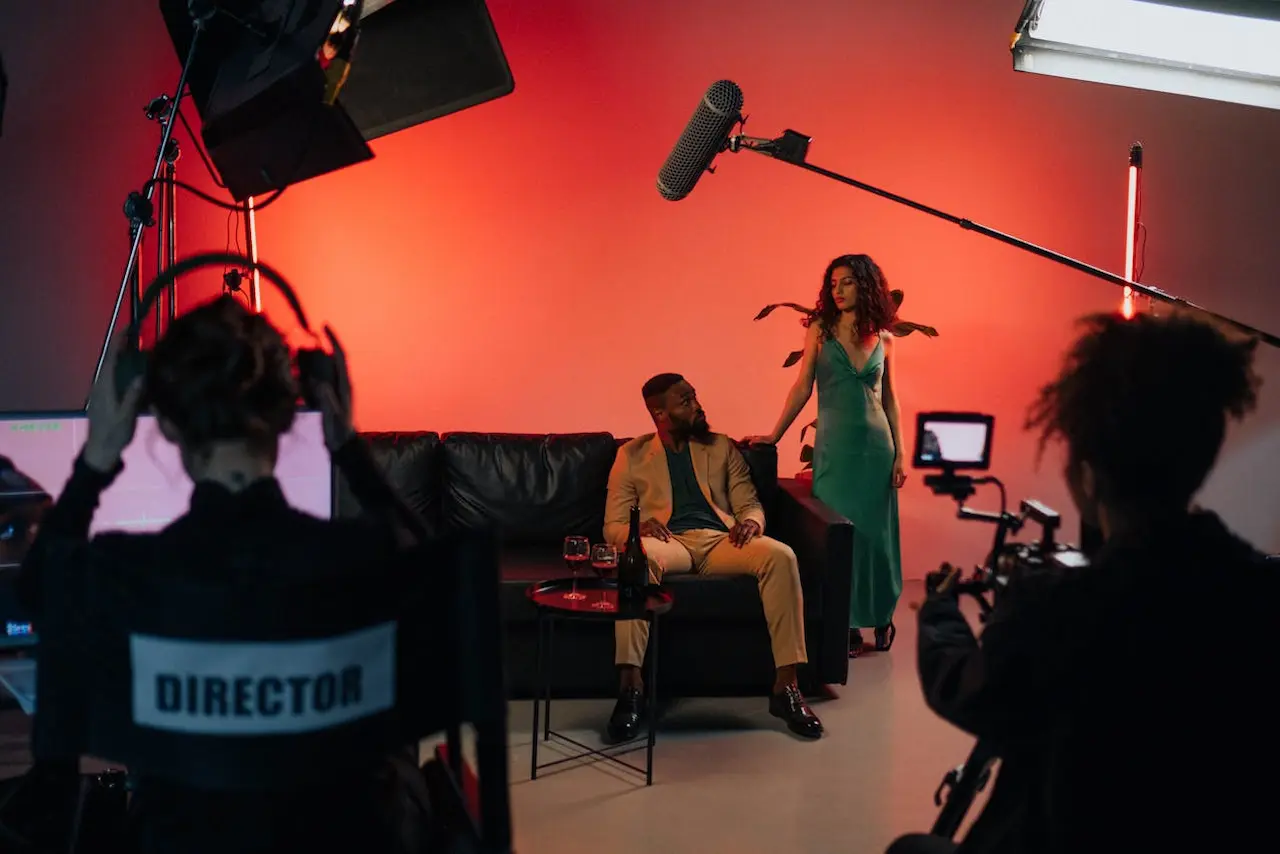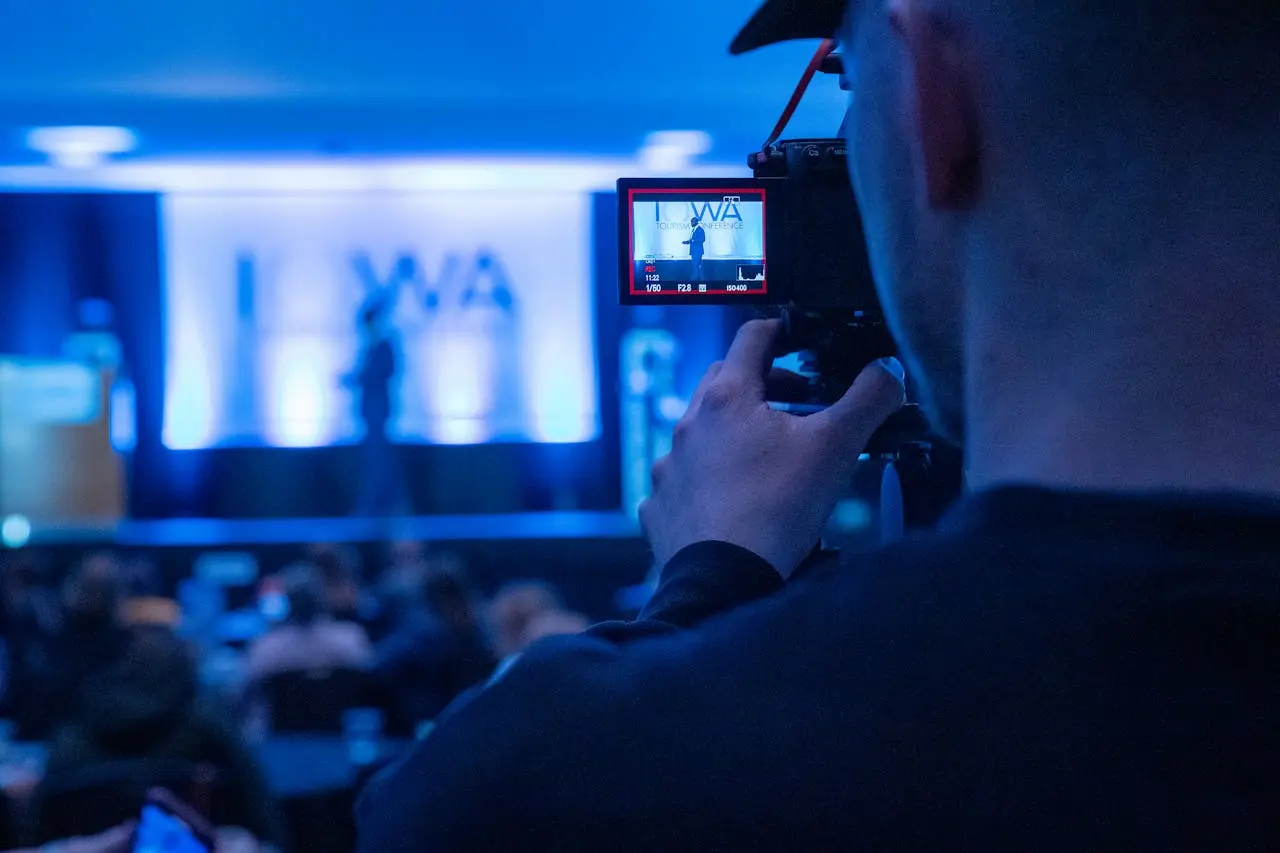Table of Contents
Cinematic styling helps corporate videos feel polished, expressive, and memorable. Companies gain an advantage when they combine clear messaging with film-inspired visuals. Good lighting, intentional framing, smooth camera movement, refined sound, and color grading all shift a video from basic presentation to meaningful storytelling. This approach helps audiences stay engaged and improves how they perceive a brand.
Below is a refined guide on how cinematic techniques strengthen corporate communication and how brands can apply them in a practical way.
Why Cinematic Techniques Improve Corporate Videos
Cinematic visuals give corporate content depth and identity. Viewers consume high-quality media every day, which sets their expectations for business communication as well. When a corporate video adopts film techniques, it feels more trustworthy and more enjoyable to watch.
A cinematic approach increases brand credibility by presenting information with intention. Lighting shapes emotion, framing guides attention, and movement creates immersion. These elements work together to increase watch time, strengthen recall, and influence how people interpret the message.
Defining Style and Understanding Audience Needs
Before filming begins, brands need clarity on tone and purpose. Cinematic does not have a single look. It can be warm, inspirational, modern, bold, or minimal. The style should match the brand’s voice.
Your audience also influences the approach. Clients look for capability and confidence. Employees look for meaning and culture. Investors look for vision. Each group responds to different cues, which guides the visual tone and story structure.
Common narrative paths for cinematic corporate videos include:
- A brand origin or purpose story
- A culture-focused behind-the-scenes piece
- A high-level vision or mission presentation
- A customer-focused narrative showing real outcomes
Cinematic Techniques That Strengthen Visual Impact

Several tools shape the cinematic feel of a corporate video. These techniques add emotion, clarity, and structure.
- Controlled lighting creates shape, depth, and mood. Soft lighting adds humanity. Directional lighting adds precision.
- Camera movement brings scenes to life with slow sliders, steady walk-through shots, or smooth pans that guide attention.
- Framing and composition direct the viewer’s eye and improve storytelling clarity.
- Depth of field adds separation between subject and environment, creating a premium look.
- Sound design gives rhythm to the message with music, ambience, and clean narration.
- Color grading reinforces tone and gives the video a unified look.
- Pacing sets emotional rhythm, improving how viewers absorb the message.
These elements transform simple footage into something that feels deliberate and visually strong.
How to Structure a Cinematic Corporate Video
A cinematic corporate video follows a flowing narrative designed to guide the viewer through key moments.
Begin with a strong opening image or line that sets tone. This helps establish immediate interest. Introduce the main idea or purpose once the mood is clear.
During the body of the video, blend story with information. This may involve employees, customers, or visual proof of the company’s process. These segments help build connection and understanding.
The highlight or core moment should reinforce transformation or achievement. Every scene should support the overall message.
The final shot leaves a lasting impression. Close with a clear call-to-action aligned with the tone and purpose of the video.
Also read: How to Use Motion Graphics to Enhance Corporate Videos
Practical Production Tips for Cinematic Quality

Film-level corporate content comes from careful planning and technical precision. Small details improve the final result.
- Use soft, controlled lighting for flattering and smooth visual texture.
- Choose lenses that create clarity and strong depth.
- Stabilize movement with tripods, sliders, or gimbals.
- Capture multiple shot sizes for variety and emphasis.
- Apply consistent color grading to unify scenes.
- Treat sound design as a core component, not an afterthought.
- Prepare talent through simple rehearsal and clear direction.
These steps help elevate production quality even within a corporate environment.
Distribution and Best Use Cases for Cinematic Corporate Videos
Cinematic content enhances many areas of corporate communication.
- Website introductions: Homepage or brand story sections benefit from cinematic visuals that set immediate tone.
- Recruitment: Culture-focused cinematic videos attract talent more effectively than text alone.
- Investor materials: Strong visuals help communicate stability and long-term direction.
- Social media: Shorter clips perform well on LinkedIn, YouTube, and other platforms.
- Internal communication: Training and leadership pieces gain authority with intentional visuals.
Long-form cinematic videos can be repurposed into shorter assets, giving multiple uses from the same production.
Also read: How to Capture Authentic Interviews for Corporate Storytelling
How to Measure Cinematic Video Performance
Performance analysis helps refine future content. Several metrics reveal how well the video resonates.
- Watch time and retention charts show viewer interest.
- Interaction metrics on hosting pages reveal how the video influences user behavior.
- Lead or campaign results indicate whether the video supports broader objectives.
- Direct feedback from viewers provides insight into emotional and practical impact.
- Sentiment or brand perception shifts reveal long-term influence.
Tracking these metrics helps teams improve their cinematic projects over time.
People Also Ask: Clear Answers for Search Intent
What makes a corporate video cinematic?
Cinematic corporate videos use film techniques such as controlled lighting, intentional framing, shallow depth, smooth movement, clean sound, and detailed color work.
Is cinematic video production realistic for business budgets?
Yes. A skilled team can scale cinematic quality to fit different budgets through smart planning and efficient shooting approaches.
How long should a cinematic corporate video be?
Most run between one and three minutes depending on the goal and platform.
Can B2B companies benefit from cinematic videos?
Yes. High-end visuals help B2B brands express expertise, trustworthiness, and professionalism.
Do you need a large crew for cinematic results?
Not always. Experienced small teams can achieve strong cinematic quality with the right equipment and workflow.
Let Your Brand Look Cinematic
Cinematic techniques help companies communicate with clarity, emotion, and confidence. They elevate everyday corporate messaging into content that feels crafted, sincere, and memorable. When brands invest in these methods, viewers respond with more attention and stronger trust.
If your team wants corporate videos with a cinematic touch, Get Camera Crew can help. Our team blends filmmaking skill with strategic communication to produce content that strengthens brand identity and delivers lasting impact.
Reach out to Get Camera Crew to bring your story to life with cinematic style.






